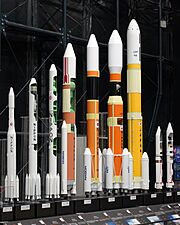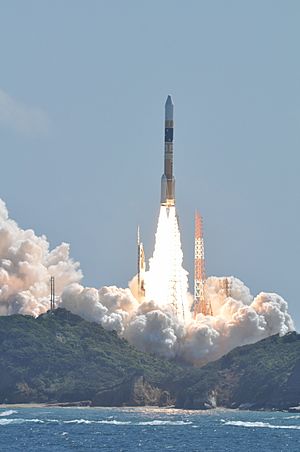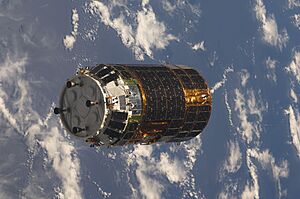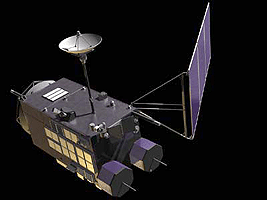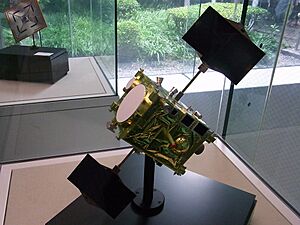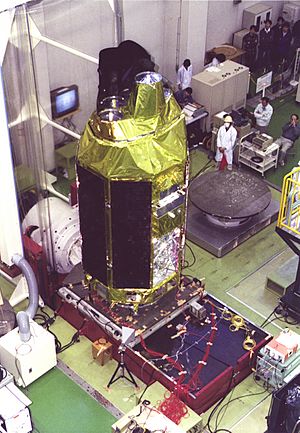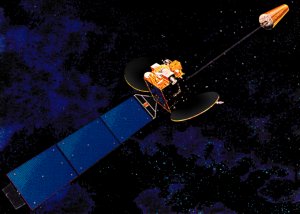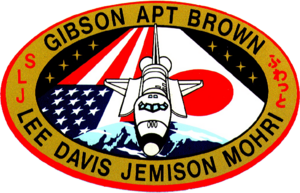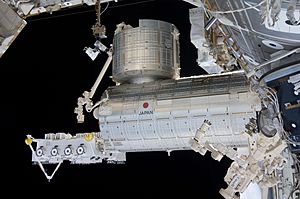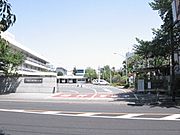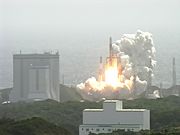JAXA facts for kids
| 宇宙航空研究開発機構 Uchū Kōkū Kenkyū Kaihatsu Kikō |
|
 |
|
| Agency overview | |
|---|---|
| Abbreviation | JAXA (ジャクサ) |
| Formed | 1 October 2003 |
| Preceding agencies | |
| Type | National Research and Development Agency |
| Jurisdiction | Government of Japan |
| Headquarters | Chōfu, Tokyo, Japan |
| Motto | One JAXA |
| Administrator | Hiroshi Yamakawa |
| Primary spaceport | Tanegashima Space Center |
| Owner | Ministry of Education, Culture, Sports, Science and Technology |
| Annual budget | ¥215.5 billion (US$1.46 billion) (FY2023) |
The Japan Aerospace Exploration Agency, or JAXA, is Japan's national agency for air and space exploration. It was created on October 1, 2003, when three smaller space groups joined together.
JAXA does many amazing things. It researches and builds new technology, launches satellites into orbit, and sends missions to explore asteroids and the Moon. Its motto is One JAXA, and its slogan is Explore to Realize.
Contents
How JAXA Started
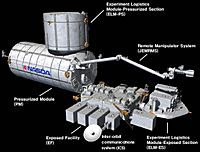
On October 1, 2003, three organizations came together to create JAXA. These were the Institute of Space and Astronautical Science (ISAS), the National Aerospace Laboratory of Japan (NAL), and the National Space Development Agency of Japan (NASDA). By joining forces, Japan could make its space program stronger.
Before they merged, each group had a special job.
- ISAS focused on exploring space and planets. It was very good at X-ray astronomy, which is studying space using X-ray telescopes.
- NAL focused on research about airplanes and flying.
- NASDA built rockets and satellites. It also built the Japanese Experiment Module, a science lab for the International Space Station. NASDA also trained Japanese astronauts to fly on the US Space Shuttle.
In 2008, a new law called the Basic Space Law was passed. This meant that JAXA began to get its directions from a special space group in the government, led by the Prime Minister of Japan.
JAXA's Powerful Rockets
JAXA uses different rockets to launch things into space. For big missions, it used the H-IIA rocket. Now, it uses the new and powerful H3 rocket. For smaller missions, JAXA has the Epsilon rocket. JAXA also uses smaller sounding rockets to study the upper atmosphere.
Building Better Rockets
Japan launched its first satellite, Ohsumi, all the way back in 1970. In the beginning, Japan used American rocket designs. But soon, it started building its own.
The first rocket made completely in Japan was the H-II, which first flew in 1994. It was a big step forward. Its design was used for later rockets like the H-IIA and H-IIB.
After JAXA was formed in 2003, it took over the H-IIA rocket. The H-IIA was very reliable, with 48 successful launches out of 49. It was retired in June 2025. JAXA also used the H-IIB rocket to send a cargo ship called the H-II Transfer Vehicle to the International Space Station.
In 2023, JAXA started using its newest rocket, the H3. It was designed to be more powerful and cheaper to launch than the older H-IIA.
Exploring the Moon and Planets
JAXA sends robotic missions to explore our solar system. These missions help us learn about the Moon, planets, and asteroids.
Active Missions: PLANET-C, IKAROS, Hayabusa2, BepiColombo, SLIM Under Development: MMX, DESTINY+ Retired: PLANET-B, SELENE, MUSES-C, LEV-1, LEV-2
Hayabusa: Touching an Asteroid
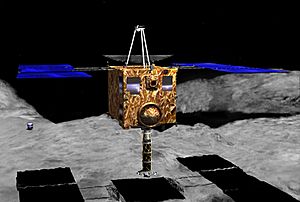
One of JAXA's most famous missions was Hayabusa. Launched in 2003, its goal was to land on a small asteroid named 25143 Itokawa, collect samples, and bring them back to Earth.
In 2005, Hayabusa successfully landed on the asteroid. After a long journey, it returned to Earth in 2010 with tiny pieces of the asteroid. This was the first time any spacecraft had ever brought back samples from an asteroid.
A second mission, Hayabusa2, was launched in 2014. It collected samples from the asteroid 162173 Ryugu and returned them to Earth in 2020.
Lunar Exploration
JAXA has sent several missions to the Moon. In 2007, it launched Kaguya, a large spacecraft that orbited the Moon for almost two years. It gathered information to help scientists understand how the Moon was formed.
More recently, JAXA launched the SLIM mission. On January 19, 2024, SLIM made a soft landing on the Moon, making Japan the fifth country to do so. SLIM's main goal was to test "pinpoint landing" technology. It landed just 55 meters away from its target, which was a huge success.
Although SLIM tipped over during landing, it was still able to work. It even survived the freezing cold lunar night and woke up again, which was a big surprise.
Planetary Exploration
JAXA also explores other planets. The Akatsuki spacecraft was launched in 2010 to study the planet Venus. After a problem during its first try, it successfully entered orbit around Venus in 2015. It is studying the planet's thick atmosphere and strange weather.
JAXA is also planning a mission called MMX. It will travel to Mars and collect samples from its moon, Phobos. This will help scientists understand where the moons of Mars came from.
Studying the Stars
JAXA uses special telescopes in space to study stars, galaxies, and the sun.
Active Missions: SOLAR-B, MAXI, SPRINT-A, CALET, XRISM Retired: HALCA, ASTRO-F, ASTRO-EII, and ASTRO-H
X-ray Astronomy
Japan has a long history of X-ray astronomy. Satellites like Suzaku helped scientists see the universe in X-ray light, which is invisible to our eyes. Today, an experiment called MAXI on the International Space Station keeps watch for X-ray sources in the sky.
Solar Observation
The Hinode satellite, launched in 2006, watches our Sun. It helps scientists understand solar flares and other activity on the Sun that can affect Earth.
Earth Observation Program
JAXA uses satellites to watch over our own planet. These satellites help with weather forecasting, monitoring climate change, and responding to natural disasters.
One important mission is GOSAT, which stands for Greenhouse Gas Observing Satellite. It measures the amount of carbon dioxide in the atmosphere all over the world. This helps scientists study climate change.
Another key mission was the Advanced Land Observation Satellite (ALOS), also called "Daichi." It took detailed pictures of the Earth's surface. Its successors, ALOS-2 and ALOS-4, use radar to see through clouds and at night.
Human Spaceflight Program
Japan has ten astronauts in the JAXA Astronaut Corps. While Japan does not have its own spacecraft to carry people, its astronauts fly on American and Russian rockets to the International Space Station (ISS).
The first Japanese person in space was Toyohiro Akiyama, a journalist who flew on a Soviet rocket in 1990. The first JAXA astronaut was Mamoru Mohri, who flew on the Space Shuttle in 1992.
Japan's biggest contribution to human spaceflight is the Kibō module on the ISS. It is the largest single module on the station and is a high-tech laboratory for science experiments in space. Astronauts from many countries use Kibō to conduct research.
JAXA's Research Centers
JAXA has centers all across Japan.
- Headquarters is in Chōfu, Tokyo.
- Tsukuba Space Center is the main center for space operations. It controls satellites, runs experiments for the Kibō module, and is where astronauts are trained.
- Tanegashima Space Center is Japan's main launch site for large rockets like the H3.
- Uchinoura Space Center is where smaller rockets like the Epsilon are launched.
- Sagamihara Campus is where scientists and engineers design and build new spacecraft and scientific instruments.
See also
 In Spanish: Agencia Japonesa de Exploración Aeroespacial para niños
In Spanish: Agencia Japonesa de Exploración Aeroespacial para niños
- Independent Administrative Institution
- Kibō (ISS module)
- Japan Space Systems, another Japanese space agency
- List of aerospace flight test centres
- List of government space agencies
- Space Brothers manga


